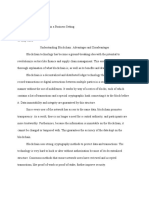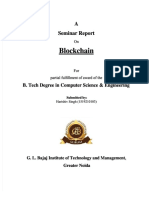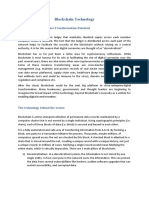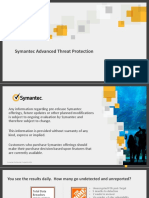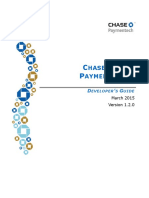0% found this document useful (0 votes)
41 views5 pagesBlock Chain
This document provides an overview of blockchain technology, including its architecture, consensus methods, and future trends. It describes how blockchain works as a distributed digital ledger made up of chained blocks. Each block contains a hash linking it to the previous block, transaction data, and a timestamp. The document also discusses challenges like scalability and solutions being explored, such as new consensus algorithms and interoperability between blockchains. Overall, the document contributes to understanding blockchain and its potential to transform industries through increased security, transparency and decentralization.
Uploaded by
anshuktn796Copyright
© © All Rights Reserved
We take content rights seriously. If you suspect this is your content, claim it here.
Available Formats
Download as DOCX, PDF, TXT or read online on Scribd
0% found this document useful (0 votes)
41 views5 pagesBlock Chain
This document provides an overview of blockchain technology, including its architecture, consensus methods, and future trends. It describes how blockchain works as a distributed digital ledger made up of chained blocks. Each block contains a hash linking it to the previous block, transaction data, and a timestamp. The document also discusses challenges like scalability and solutions being explored, such as new consensus algorithms and interoperability between blockchains. Overall, the document contributes to understanding blockchain and its potential to transform industries through increased security, transparency and decentralization.
Uploaded by
anshuktn796Copyright
© © All Rights Reserved
We take content rights seriously. If you suspect this is your content, claim it here.
Available Formats
Download as DOCX, PDF, TXT or read online on Scribd
/ 5


